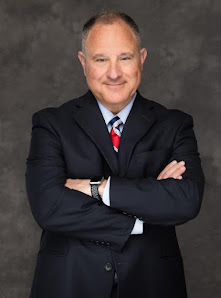CREATORS
April 22, 2025
What happens when the government violates an individual's
constitutional rights? We may soon find out as the United States Supreme Court
has agreed to hear a case involving the federal government's deportation of
noncitizens in violation of a court order and without due process of law.
The Supreme Court's response to unconstitutional conduct by
law enforcement as it relates to individuals accused of a crime may serve as a
guide.
In 1961, the high court created a dramatic remedy that would
prevent the prosecution of an accused whose constitutional rights had been
violated. The Court established the exclusionary rule, which remains
controversial to this day.
In 1957, Cleveland, Ohio police officers went to the home of
Dollree Mapp looking for a suspect in a criminal investigation. She refused to
let the police in without a warrant.
The police left, and when they returned, they were armed
with a phony warrant. Chicanery took the place of real police work. Instead of
going to a judge to get a warrant, they drew up their own. After entering
Mapp's home, police searched and confiscated obscene material, resulting in
Mapp's arrest.
As a result of the police misconduct, the Supreme Court, in
Mapp v. Ohio, provided a remedy — the exclusion of illegally obtained evidence
from admission in a criminal prosecution — resulting in a dismissal of the
charges.
The rationale behind the exclusionary rule was to deter
police misconduct. If police intentionally circumvented their obligation to get
a search warrant, or deprived an accused of due process, the penalty would be
significant — the inability to use any evidence illegally obtained.
Over the last half century, the Supreme Court has whittled
away at the exclusionary rule. The court has ruled that the exclusionary rule
does not apply if the police obtained no advantage by their unlawful conduct,
if a judge improvidently issued a warrant or if a valid warrant was illegally
served.
In 2009, the assault on the exclusionary rule continued. The
Supreme Court found that evidence confiscated as a result of an arrest that was
the product of an expired warrant was not subject to exclusion. The court found
that negligence by one police department in failing to remove a warrant did not
contaminate evidence obtained by a different police department that was unaware
of the invalid arrest warrant.
In 2011, the U.S. Supreme Court further narrowed the exclusionary
rule. Police in Alabama arrested Willie Davis. After he was handcuffed and
placed in the backseat of a police cruiser, Davis' car was searched. The police
found a gun. They were in conformity with the law as it existed at the time the
warrantless search of Davis' car was conducted.
Subsequently, the law changed, and Davis sought to have the
evidence excluded. The Supreme Court refused to exclude the evidence. Justice
Samuel Alito concluded that suppression of evidence as the result of a change
in the law, a change that came after a lawful search, "would do nothing to
deter police misconduct."
In 2016, Supreme Court Justice Clarence Thomas wrote an
opinion in a Utah case ruling that evidence obtained from an unlawful police
stop would not be excluded from court because the link between the stop and the
evidence's discovery was "attenuated" by the discovery of an
outstanding warrant during the stop.
Despite the Supreme Court's diminution of Mapp v. Ohio,
history has looked kindly on the Warren Court and the important protections
provided by the court to men and women accused of crime.
The current Supreme Court has stepped in to halt
deportations to El Salvadore temporarily. The Trump administration faces
possible contempt for prior deportations and specifically for the mistaken
deportation of Kilmar Abrego Garcia. History will remember what remedy the
Supreme Court crafts, if any, for Garcia and the other Venezuelans deported
without due process.
Matthew T. Mangino is of counsel with Luxenberg, Garbett,
Kelly & George P.C. His book The Executioner's Toll, 2010 was released by
McFarland Publishing. You can reach him at www.mattmangino.com and follow him
on Twitter @MatthewTMangino.
To visit Creators CLICK HERE








No comments:
Post a Comment